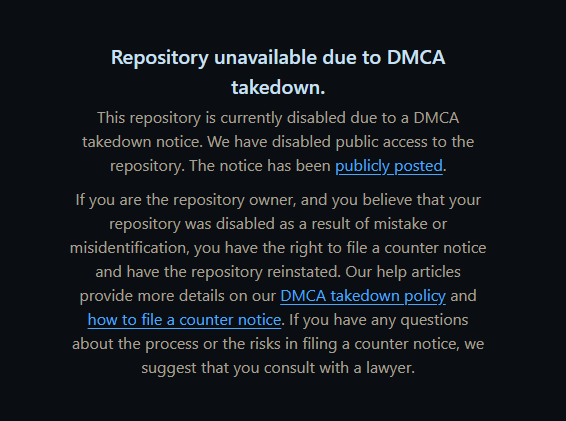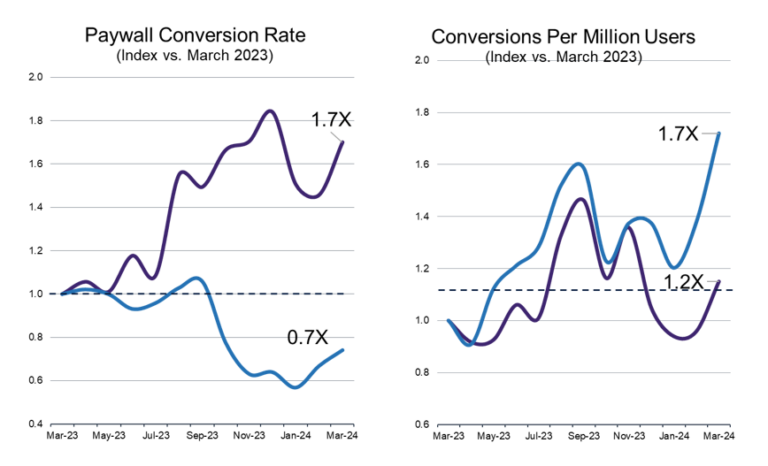Author: Techub exclusive interpretation
Written by: J1N, Techub News
In the era of information explosion, high-quality news reports and in-depth analysis are often blocked by paywalls. However, users' desire for free information has spawned a series of browser plug-ins called Bypass Paywalls Clean (BPC). This type of plug-in uses technical means to bypass the payment restrictions of websites, allowing users to freely access previously restricted content. Although this meets the needs of some users, it has also triggered widespread discussions about copyright and ethics.
Banned for copyright infringement
In August 2024, BPC and its 3,879 branches in Github open source documents were banned . The reason was that the News Media Alliance (NMA) filed a complaint with the GitHub platform that hosted the plug-in code. The organization, which represents the interests of more than 2,200 news, magazine and digital media publishers, accused BPC of infringing the rights of its members by bypassing technical measures to protect content, in violation of the Digital Millennium Copyright Act (DMCA).

In August 2023, the NMA filed a similar complaint with GitHub. Unlike previous cases, GitHub published the full details of the complaint, including the complainant's information and the legal basis for removing the content. In a letter to GitHub, the NMA explained that BPC not only involves copyright infringement, but also involves circumvention of technological measures to protect content, which is a direct violation of Section 1201 of the DMCA.
NMA found four repositories containing illegal software products. These include "bypass-paywalls-chrome", "bypass-paywalls-firefox", "bpc_updates" and "bypass-paywalls-clean-filters". Each repository contains code that allows users to bypass paywalls on websites protected by various technical measures. Depending on the content protection system used, some publications offer a limited number of free articles (so-called "soft" paywalls), while others completely block access to non-subscribers (hard paywalls).
NMA stressed that all of these repositories contained tools that violated DMCA regulations and circumvented technical content protection measures. After reviewing the complaint and conducting its own investigation, GitHub found that NMA's allegations were reasonable. As a result, the platform disabled all 3,879 repositories, including the main BPC repository, which dealt a heavy blow to the community of developers and users who supported the extension.
It is worth noting that the paywall technology of many mainstream media such as Bloomberg and the New York Times is actually more about adding restrictions at the front-end level of the web page, relying on JavaScript or cookies in the browser to control user access rights. This mechanism is not technically rigorous, and is more like a "guard against gentlemen but not villains" approach. It assumes that most users will abide by the rules, but does not set up encryption or back-end verification that is truly difficult to crack. This gives plug-ins like Bypass Paywalls Clean an opportunity to take advantage of it. By clearing Cookies, disabling JavaScript, or simulating crawlers, you can easily bypass these soft restrictions and directly obtain the complete page content.

This shows a contradiction: on the one hand, news media need paywalls to protect their revenue sources, but on the other hand, they dare not completely block the entrance because it will affect search engine crawling and user experience, and even directly lose traffic. Therefore, paywalls have become a subtle psychological game between media and users to a certain extent.
The paywall battle: touching on the future of journalism
The news industry is in trouble, with the Reuters Institute for the Study of Journalism saying that in 20 markets around the world, only 17% of people pay for news, down from 10% a decade ago. In the United States, the figure is 22%. Even among those who say they are very or extremely interested in news, 57% will not pay for online news. Users' behavior of bypassing paywalls is difficult to measure directly as theft, but according to the All About Cookies survey , about 60% to 70% of people say they avoid sites with paywalls, and about 60% say they "regularly look for ways to access paywalled content for free." In contrast, 69% of Americans say they have used someone else's streaming service login information, and 80% do not consider password sharing of this nature to be an act of theft.
Lance Ulanoff, the US editor-in-chief of TechRadar, one of the world's top technology media, said that "the era of free websites is coming to an end, and there is nothing you can do about it." In his article , he listed the reasons for the current predicament of the news industry: the high cost of producing high-quality content (from short news posts, long product reviews to articles and videos); the rise of ad blockers, which has resulted in ads in publications not generating revenue for media companies, or the fact that Google provides AI-generated content summaries in search results, which has led to fewer and fewer people viewing content and ads. Even without the above factors, traditional media like CNN.com are struggling because a large portion of users read news from other sources, usually YouTube or TikTok. It's unlikely that a two-minute TikTok will have the depth of a CNN.com or Washington Post article, but that doesn't matter. Young people trust these sources, and a lot of traffic is directed to video media platforms.
Although the traffic of news media platforms has declined due to the above reasons, there are still many people who rely on these traditional media websites for news and information, and are not used to paying for content and are unwilling to enter the field of paywalls. For example, Margaret Sullivan, executive director of the Craig Newmark Center for Journalism Ethics and Safety at Columbia Journalism School, " has mixed feelings " about paywalls. She is very happy that The Guardian is raising funds instead of setting up a paywall, and she has also cancelled the paywall for her post "American Crisis" on Substack. Like ordinary readers, her attitude towards paywalls stems from the fact that she often reads articles on various platforms, and she is frustrated by being asked to pay every time she opens a website. She said, "I will also be angry when I encounter a paywall when I read an article that interests me."
So if the paywall is abolished, can it achieve a win-win situation for the media and users? How much impact will the paywall strategy have on the operation of the media? Media data analysis company Mather Economics released a report "Paywall Interception Rates of "Closed" and "Open" News Websites Bring Revenue Optimization Insights" , which analyzed the performance of 118 news media websites one year after changing their paywall strategies in March 2023. The research variables include monthly users, monthly page views, conversion rate per million users, and paywall conversion rate. Finally, an economic model is used to see how their paywall strategy affects subscriptions, retention, and revenue.
Publishers included in the study were divided into two groups: one group of news sites, the "closed" group, allowed fewer free articles, so more visitors encountered paywalls. The other group, the "open" group, allowed more free content, so fewer visitors encountered paywalls. And met the following criteria: offering paid subscriptions; at least one standard form of content restriction (registration wall, premium paywall, metered paywall); passed all data quality checks and verifications from March 2023 to March 2024, and accurately distinguished between the three types of restrictions.

Conversion rate comparison chart (purple is the open group, blue is the closed group)
In terms of the changes in the number of users and page views, both groups showed a downward trend, which is consistent with the downward trend of the entire news industry during the same period. However, the closed group saw a greater decline in the number of monthly users and page views, especially from August 2023, when the difference in page views became apparent, and the difference in the number of users became apparent from October 2023.
In terms of conversion rate, although the conversion rate of the closed group is relatively low, due to the increase in platform brand benefits and volume, its conversion rate per million users is higher than that of the open group. The conversion rate of the open group is higher when there are fewer users, because users are more engaged after consuming more free content.
The economic model shows that the closed group of websites has an average increase of 46% in the number of new subscribers, but the disadvantage of this strategy is that the user retention rate is low, which means the risk of user churn increases. In order to achieve the same number of subscribers as the closed group, the open group needs a higher retention rate as a balance, for example, an annual retention rate of 85% in the first year and 63% within two years.
In addition, in terms of advertising revenue, the closed group suffered a significant impact on advertising revenue after a few months due to a decrease in page views, while the open group had a milder impact on advertising revenue in the early stages due to a smaller decrease in visitors.
Overall, the closed group adopts a more aggressive subscription acquisition strategy, which can bring in more new subscribers in the short term, but faces pressure on user retention and long-term advertising revenue; the open group improves user experience and engagement through a more relaxed paywall, but to achieve the same level of revenue as the closed group, it must work harder on user retention and pricing strategies.
Regardless of how news media monetize, news organizations have a responsibility to demonstrate the value of their content to their audiences, to show why it is worth paying for. Journalism has many different techniques to encourage people to pay, but they will only pay if it enriches their lives. A significant portion of the population is already willing to pay a lot for current news, but most people are not willing to pay for current news.











